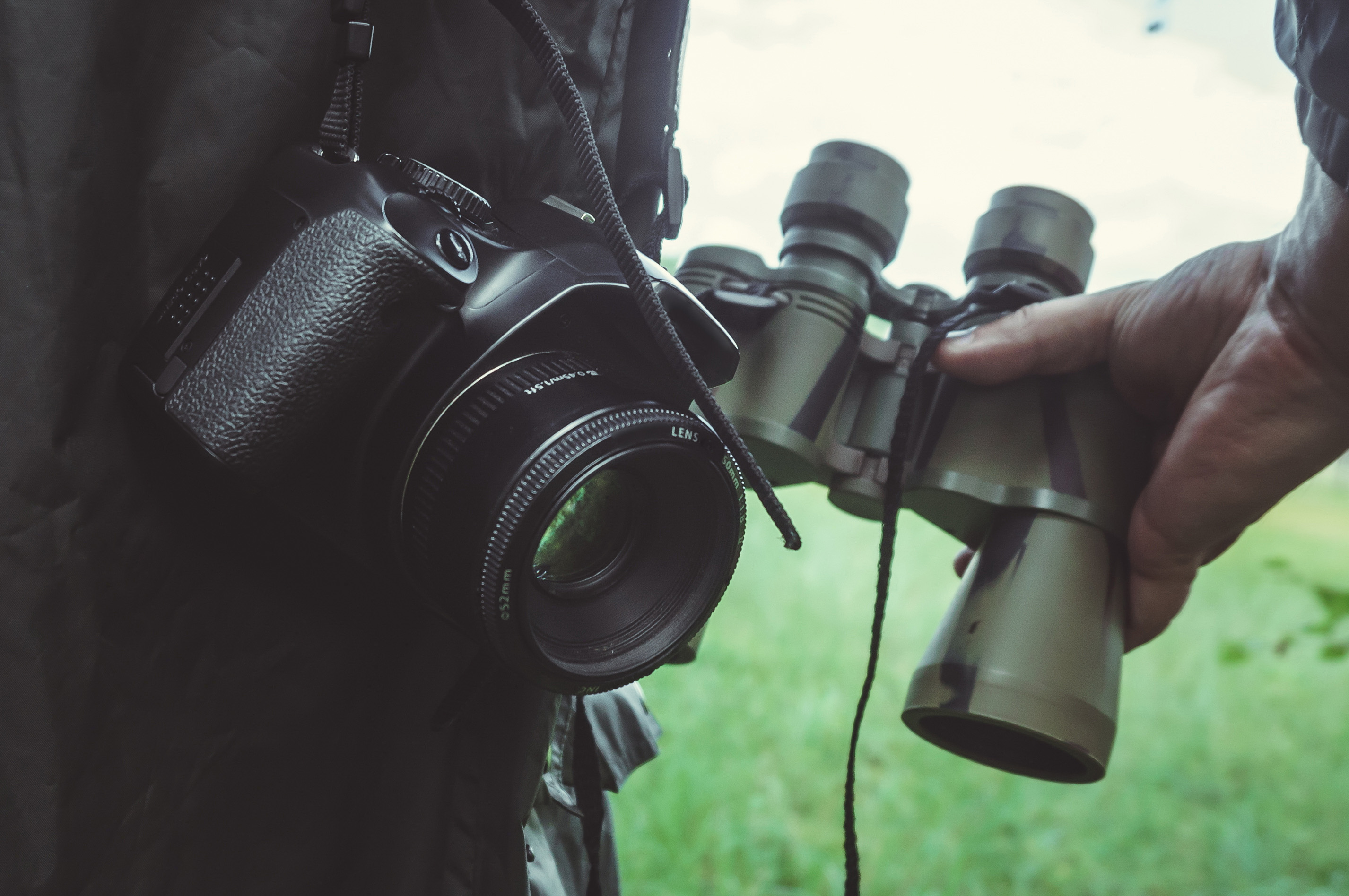The quickest, most accessible means of nature photography is “digiscoping”. The name is a portmanteau of “digital camera” and “spotting scope,” and the gist of the technique is simple: you hold your camera up to the eyepiece of your spotting scope and take a picture.
This technique is also called afocal photography. It’s really simple and, when practiced with care, can produce great results without the need for expensive cameras or telephoto lenses.
The advantages of digiscoping
Digiscoping has several practical advantages. First and foremost, it’s quick. Should a birdwatcher spot a rare bird through their spotting scope, and want to document it, they need a means of imaging it quickly before it flies off.
Other times, you might spot a bird but it will be too far away for you to get a good picture with just your camera. The magnification provided by the spotting scope brings distant birds into range.
It’s also a terrific way to conduct nature photography on a budget, making the hobby much more accessible to many more people.
This accessibility is enhanced by its simplicity. At its most basic, digiscoping is so terrifically simple that anybody can do it — just hold your camera phone up to the eyepiece of your spotting scope and snap away.
What equipment will you need?

Despite the name, digiscoping doesn’t necessarily require a spotting scope. You can also do it with binoculars (placing your camera over one of the barrels) or a monocular, but both of these options have lower magnification (usually around 10x) than spotting scopes, and it’s the magnification that will really allow your photography of birds (or any other distant wildlife) to pop.
The best spotting scopes can have magnifications greater than 60x, such as the Celestron Ultima 100, which has zoom magnification of 22x to 66x, or the Bushnell 20-60×65 Prime, which has 20x to 60x magnification. Both of these examples are reasonably affordable, too.
As a rule, look for spotting scopes with larger apertures. A spotting scope of 85mm diameter will let more light in than one with a 60mm aperture, for example. This is important when zooming in, as a smaller spotting scope will have lower light levels, meaning your photograph will appear darker.
For steady viewing, a tripod is essential, with a panhandle head for ease of motion of the scope. Spotting scopes usually come with “feet” that can easily be fixed to a quick-release head.
Then there’s a camera. Smartphone camera technology has developed to the point that what was once a gulf, in quality terms, between DSLRs and smartphones is now much narrower. DSLRs have more options, but that also makes them more complicated and more expensive. Most of us already have smartphones, with apps that make editing and sharing your images a breeze.
Do you need a camera adapter for digiscoping?

Yes and no. The point of afocal photography is that you can just hold your camera up to the eyepiece, but while this may produce satisfactory results, it is a bit crude and doesn’t produce the best results.
For example, you can hold your finger between the phone and the eyepiece so that you keep the image in focus (too close to the eyepiece, or too far away, and you lose focus), but this can allow stray light in, resulting in vignetting around the edges or shadowed bands across the image. Also, an unsteady hand can result in blurring, which is amplified at high magnifications.
However, the addition of an adapter to hold your camera in place can completely transform the quality of your digiscope photography.The adapter fixes your camera to your eyepiece at the correct distance, and also blocks out any stray light that might otherwise try to sneak in.
You can get adapters for DSLRs and smartphones, but this is where digiscoping possibly favors smartphones over DSLRs. For one thing, you’ll need a very specific adapter to match your brand of camera and spotting scope. Attaching a big and bulky DSLR in this way can also unbalance your set-up, which will really affect the stability and quality of your image. Counterweights added to your set-up can address this, but who wants to be carrying around all that weight when out on a photography trip?
On the other hand, smartphones are lightweight, and their adapters tend to be universal and inexpensive. Just make sure that the smartphone adapter fits the diameter of the spotting scope’s eyepiece.
The adapter will steady your camera, but pressing the button on the camera to take the picture can still introduce unintended vibrations. If you are using a DSLR then a cable-release system will allow you to control your camera remotely without having to touch it. If you are using your smartphone, then there are Bluetooth remote control devices available for iOS and Android, such as the CamKix wireless Bluetooth camera shutter remote control for smartphones. These Bluetooth devices are inexpensive but extremely helpful.
If you are looking to take professional-quality photographs, then digiscoping is not as good as using high-end telephoto lenses and DSLRs. However, most of us are not professional nature photographers, and in that case, digiscoping is the perfect solution — easy to do, easy to share, and easy to afford.
